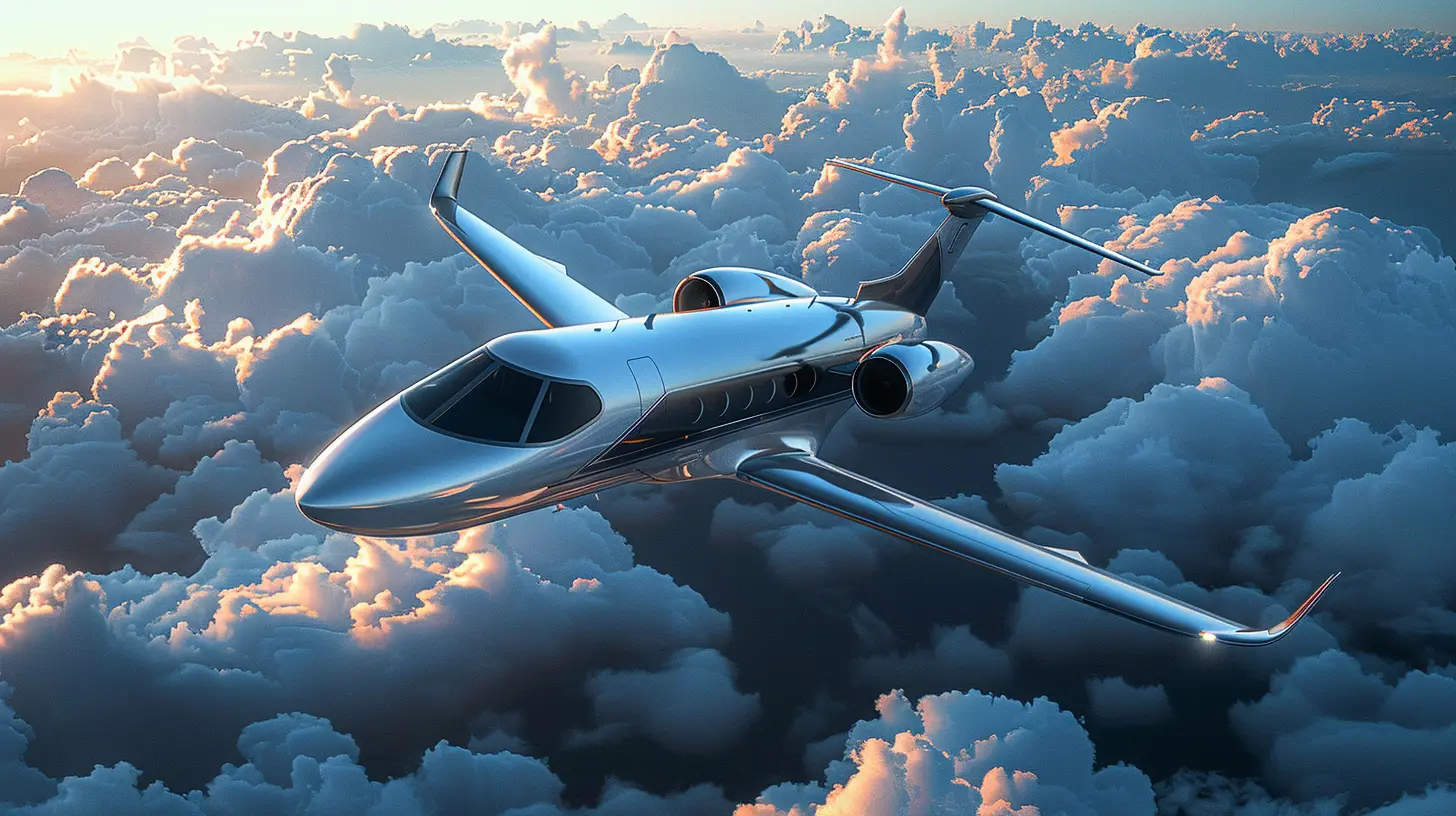The Future of Green Aviation: Electric Planes and Sustainable Fuel
28 June 2025
Let’s be honest—air travel is a modern marvel, but it’s also one of the biggest culprits when it comes to carbon emissions. If you’ve ever looked out of an airplane window and marveled at the clouds, you probably didn’t think about the tons of CO2 trailing behind the plane. But here’s the good news: the aviation industry is finally putting its foot on the gas—or rather, easing off it—in the push toward a greener future.
So buckle up as we dive into the future of green aviation. We’re talking electric planes, sustainable aviation fuels (SAFs), and how both are reshaping the way we fly. It might sound like science fiction, but this is very real, and it’s happening faster than you might think.
Why Green Aviation Matters More Than Ever
Let’s start with the obvious. Climate change is not knocking politely anymore—it’s banging on the door. The aviation industry is responsible for about 2-3% of global CO2 emissions. That might seem small, but in a sky full of planes each day, it adds up. And with passenger numbers expected to double by 2040, the carbon footprint could explode if we don’t take action.Now, here's the kicker: traditional jet fuels are fossil fuels. They release carbon atoms that have been buried for millions of years straight into the atmosphere. It’s simply not sustainable. In other words, we’re flying straight into turbulence if we don't pivot.
Electric Planes: Not Just a Buzzword Anymore
When you hear "electric planes," your brain might go to tiny, experimental aircraft or drones. But the truth is, electric aviation is gaining some serious altitude.What's the Buzz About?
Electric planes run on battery-powered motors instead of jet fuel. That means zero emissions in flight, less noise, and fewer moving parts (which equals lower maintenance costs). Sounds like a win-win, right?Current Progress in Electric Aviation
Companies like Eviation, Pipistrel, and even aviation giants like Airbus and Boeing are throwing their hats into the electric ring. Eviation’s “Alice,” an all-electric commuter plane, had its first successful flight and aims to carry 9 passengers over 250 miles. It’s flying proof that silent skies could be closer than we think.Another notable example is Rolls-Royce’s “Spirit of Innovation”, which recently broke the speed record for electric planes. So yes, electric flying isn’t just a fantasy anymore; it's evolving fast.
Challenges to Overcome
Now, let’s not sugarcoat it—there are hurdles. The biggest one? Batteries. The current battery technology can't compete with jet fuel in terms of energy density. Simply put, jet fuel packs a bigger punch in a smaller package. So while electric planes are ideal for short-haul regional flights, we’re still a distance away from fully electric transatlantic trips.But just like smartphones got smarter and electric cars got cooler, battery tech is evolving. Lighter, more energy-dense batteries are already in the works. Think of it like the Wright brothers stage of electric flight—we’re just getting started.
Sustainable Aviation Fuel (SAF): The Here and Now
So if electric planes are the future, what’s the present solution? Enter sustainable aviation fuel.What Exactly Is SAF?
Sustainable aviation fuel is basically jet fuel made from non-petroleum sources—like algae, municipal waste, used cooking oils, or even captured carbon dioxide. Yeah, it sounds like something out of a sci-fi movie, but it’s very real. And best of all, SAF can be used in existing aircraft with little to no modifications.Why SAF Is a Game Changer
SAFs can reduce greenhouse gas emissions by up to 80% over their life cycle compared to conventional jet fuel. That’s huge. Plus, they can be dropped into current fuel systems, which makes adoption a heck of a lot easier.Airlines like United, Delta, and British Airways have already started integrating SAF into their operations. In fact, United Airlines completed a commercial flight using 100% SAF on one of its engines. It’s a loud and clear message: the skies are finally turning green.
What’s Holding SAF Back?
Cost. Plain and simple. SAF is significantly more expensive than traditional fuel—sometimes 3 to 5 times more. And supply is another issue. Producing enough SAF to power all the world’s aircrafts is going to require serious scaling up of bio-refineries and global infrastructure.But here's the silver lining: more governments and private investors are stepping up with funding and incentives. And as production scales, prices should drop—just like we saw with wind and solar energy.
Hybrid Planes: The Best of Both Worlds?
While we wait for battery tech to catch up and SAF production to scale, hybrid planes are stealing the spotlight. These aircraft mix conventional engines with electric motors—just like a Prius, but with wings.Why Hybrids Make Sense
You get improved fuel efficiency (up to 30% better!) and reduced emissions. Plus, they act as a stepping stone. Instead of overhauling the entire aviation infrastructure at once, hybrids offer a smoother transition.Airbus is already working on a concept called E-Fan X, and smaller startups are refining hybrid regional planes that could be game-changers for short to medium-haul routes.
Infrastructure Needs: It’s Not Just About the Planes
Think of green aviation like building a garden. Sure, you need the seeds (in this case, the aircraft), but you also need the soil, the water, and the sunlight. Similarly, for electric aviation or SAF to thrive, we need the right infrastructure.Charging Stations and Electric Grids
For electric planes, airports will need charging stations—lots of them. And not just any power outlets. We're talking high-powered, fast-charging systems tied into green energy grids. It's a tall order, but not impossible.SAF Distribution Networks
Similarly, SAF will need its own supply chains—from refining to transportation to airport distribution. Right now, only a handful of airports even have SAF available. That’s where investment needs to flow.The Role of Government and Policy
Let’s be real: innovation alone isn't enough. For green aviation to truly take off, we need strong governmental support. That means policy changes, tax incentives, and funding for research and development.Europe is already ahead with initiatives like the “Fit for 55” package, which aims to make SAF usage mandatory. The U.S. is catching up with tax credits under the Inflation Reduction Act and grants through the FAA.
More globally unified regulatory frameworks and carbon offsetting standards will further help push airlines toward real and measurable sustainability goals.
What This Means for You (Yes, You!)
You don’t need to be an aerospace engineer to be part of this change. As passengers, our choices matter.- Opt for airlines that use SAF or invest in green aviation.
- Fly less frequently when it makes sense—especially for short distances.
- Offset your carbon footprint when possible.
- Stay informed and keep the conversation going.
The more demand we create for sustainable options, the faster the industry will pivot.
Looking Ahead: Blue Skies Can Be Green Too
We’re standing at a crossroads. One path continues with business as usual—burning fuels, increasing emissions, and waiting for the damage to pile up. The other? A new era of clean, quiet, sustainable air travel.Sure, we’ve still got a way to go. Electric planes aren’t replacing 747s tomorrow. SAF isn’t yet as cheap or abundant as we’d like. But we’re in motion, and that’s what counts.
The innovation is real. The urgency is real. And the future? It's lighter, quieter, and a whole lot greener.
all images in this post were generated using AI tools
Category:
Green TechnologyAuthor:

Michael Robinson
Discussion
rate this article
2 comments
Kairoth Rosales
Exciting developments ahead!
October 6, 2025 at 3:20 AM

Michael Robinson
Thank you! We’re thrilled about the potential advancements in green aviation!
Cassian Pope
Exciting innovations ahead for aviation!
July 13, 2025 at 12:45 PM

Michael Robinson
Absolutely! The future of green aviation holds incredible potential for both electric planes and sustainable fuels, transforming the industry for the better.


